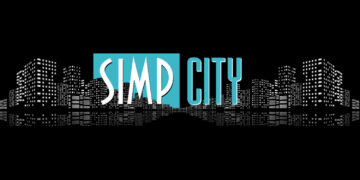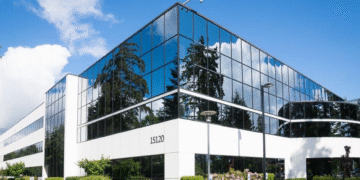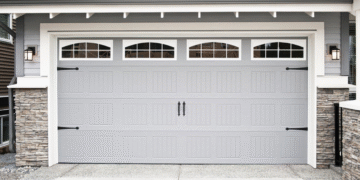What new forces are reshaping the look and feel of today’s offices? Many wonder how modern workspaces continue to evolve while still feeling familiar.
Fresh materials now appear in projects of every size. Classic building methods still guide many decisions, yet new options offer clear gains.
Designers aim for durability, clean lines, and order that lasts. These goals make innovative products more appealing each year. By reading ahead, readers will gain a clear view of the trends changing modern office architecture from the ground up.
Strong Metals for Lean Frames
Modern steel options give office buildings strong support with slimmer shapes that let strong frames rise quickly and cleanly. Many heavy things can be held by these metals without adding too much weight, which makes work easier on the job site.
New coatings keep steel from rusting, staining, and getting damaged by bad weather for many years. Light alloys work well with everyday tools and help keep projects organized and calm. Builders like how metals stay straight even when they are used every day and put under a lot of stress.
Strong beams also save money because they last a lot longer than weaker ones. Metal looks good with glass and wood, giving the room a balanced look that is both new and old-fashioned.
Clear Glass for Calm Light
Wide glass walls guide daylight into many rooms, helping workers enjoy bright spaces without harsh glare. Modern panes use steady layers that limit heat and let offices stay cooler with simple systems.
Safety glass keeps cracks from spreading, adding quiet protection to busy areas. Tinted versions soften sunlight, giving teams warm light that still feels controlled.
Glass helps people stay connected across rooms without loud noise or disruption. Many builders like how glass lines blend well with stronger metal frames. Simple seals keep glass tight against dust and air leaks.
Smart Composites for Steady Work
Composites combine fibers and resins to form tough parts that stay light yet firm in busy places. They resist dents and scratches from carts, chairs, and steady foot traffic. These pieces keep their shape without bending, even after long daily use.
Edges stay smooth for easy cleaning, helping rooms look neat and welcoming. Workers enjoy calm surroundings when surfaces do not wear down quickly. Composites match many colors and textures, giving designers simple ways to balance old and new looks.
They also fit neatly with metal frames, glass fronts, and wood trims in shared spaces. Trusted brands like Butler Wall Panels can also blend with composite elements to form neat office walls that stand strong through constant use.
Natural Wood for Warm Balance
Natural wood brings warm tones that make offices feel grounded and stable. Oak, maple, and other trusted wood types offer clean grain and quiet color. Meeting rooms often use wood because it softens edges and helps people stay calm.
Strong beams support open spaces while keeping a classic sense of order. With steady care, wood holds up against bumps, marks, and long days of use.
Clear finishes protect it from sunlight and wear, giving years of warm service. Wood also pairs well with bright glass walls, soft metal frames, and calm colors.
Tough Concrete for Firm Ground
Concrete floors remain a dependable base for heavy loads and daily action. New mixes cure faster and build strength sooner than older versions. Flat surfaces make it easy to move carts, desks, and large files.
Sealed layers keep dust down while adding a simple shine that brightens rooms. Concrete colors can be softened to mimic stone or polished for a clean, modern look. These floors join well with steel, glass, and wood in open workplaces.
Teams appreciate surfaces that stay firm without constant repair. Concrete’s lasting value honors the long history of strong and steady building work.
Acoustic Tools for Quiet Focus
Acoustic boards help calm noisy rooms by catching sharp echoes and steady chatter. These simple panels hide in ceilings and walls without drawing attention. New fibers absorb sound while staying safe, clean, and easy to maintain.
Boards slide into place with little effort, making them helpful in tight schedules. They blend with wood trims, smooth glass, and neat metal frames.
Quiet rooms help workers think clearly and keep tasks organized. Visitors also notice the calm mood in areas shaped with good acoustic care.
Flexible Walls for Smooth Flow
Movable walls let teams change layouts without major rebuilding, giving offices a chance to grow with little stress. Tracks guide panels in clean lines so rooms can open or close as needed.
Strong parts keep each panel firm through repeated moves across the years. These walls help companies add new groups or reshape meeting areas in simple steps. Latches keep surfaces tight for privacy and steady work.
Many finishes match the classic look of wood, metal, or soft colors. Flexible walls also help staff stay organized during fast changes.
Clean Finishes for Lasting Style
Clean finishes give workspaces a neat look that stays fresh through daily use. Low-fume coats protect indoor air and dry quickly for simple work plans. Smooth layers resist marks from shoes, chairs, and steady hands.
Calm hues help workers focus by keeping rooms free from distracting patterns. These finishes match well with concrete floors, glass walls, and wooden details.
New sealers keep surfaces clear without yellowing over time. Good finishes spread light gently across rooms for a soft, ordered feel.
Energy-Wise Systems for Steady Savings
Energy-wise systems help offices use less power while keeping rooms comfortable each day. Better insulation holds warm or cool air steady during long seasons.
Modern films on windows slow heat loss and reduce strain on older machines. Smart vents direct air to the places that need it most. Simple controls dim or brighten lights based on natural daylight.
Many tools now operate with lower power draw, reducing costs and alleviating pressure on busy systems. These upgrades protect resources by limiting waste. Such systems follow the time-honored idea that careful use of energy brings long-lasting reward.
Modern Office Architecture: Innovative Construction Materials
Materials reshaping modern office architecture continue to prove their worth through strength, order, and long-term value. These choices help create workspaces that feel steady, calm, and rooted in reliable building traditions.
Each product adds useful traits that support clear routines and daily tasks without needless strain. Workers benefit from clean light, firm floors, warm wood, and quiet rooms shaped with thoughtful care.
Designers gain the freedom to plan spaces that will hold up for many years. Such improvements honor both classic methods and modern needs.
Visit our website for more like this.









































